TL:DR – The Convolvulus Hawk-moth is an infrequent visitor to British gardens, but they do occasionally turn up, having crossed the channel, and there is evidence of breeding here, but not over-wintering yet. Several were attracted to Nicotiana I grew especially for them.
UPDATE: 8 Sep 2024 Finally, annother Connie, no Nicotiana, just turned up, hung around the wisteria, flew off.
UPDATE: 1 Sep 2022 Another arrived in the garden tonight less than a week after the first, it nectared on the still blooming Nicotiana before diving into the actinic moth trap. I lifted the lid to let it out and it soured away into the night sky, like a whirring wraith in a pink and black stripey mohair rollneck.
The Convolvulus Hawk-moth, named for its larval food plant convolvulus (bindweed) and its hawk-like appearance, is a relatively rare visitor to the UK from mainland Europe.
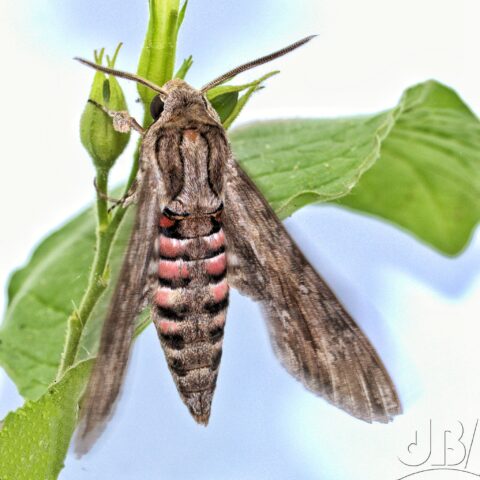
The books usually say it migrates rarely and will be seen only in the South West of England if it does, but it has appeared elsewhere, often carried in on the same weather as other migrants, such as the Hummingbird Hawk-moth. There’s also the likelihood of the offspring of Spring migrants appearing as adults in the late summer.
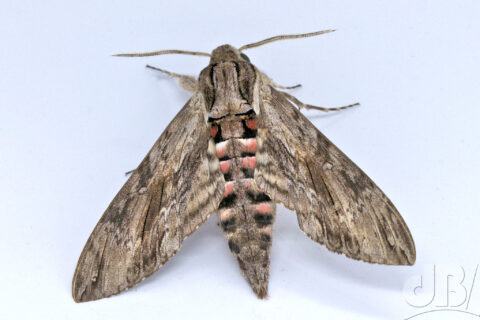
The species’ wingspan can be 85 to 120 millimetres, as big as the British Privet Hawk-moth and with those pink and black stripes it’s almost like a close cousin.
The Convolvulus Hawk-moth likes to nectar on tobacco plants and ginger lilies among other flowers and I have been growing the former in our back garden since I started mothing in the hope of seeing a Convolvulus. After our trip to the New Forest with the LepiLED,* I reverted to my trusty 40W actinic trap next to the tobacco plants for the first evening lighting up back home. Within 20 minutes or so I could hear a whirring, humming insect near the plants and with a torch caught site of it with its huge compound eyes glowing like embers in the air. It did not stay long and flew off over neighbouring gardens. I mused on it being another migrant, perhaps a Striped Hawk-moth of which there had been many recent reports across East Anglia and the southern counties, but this moth was bigger, a lot bigger.
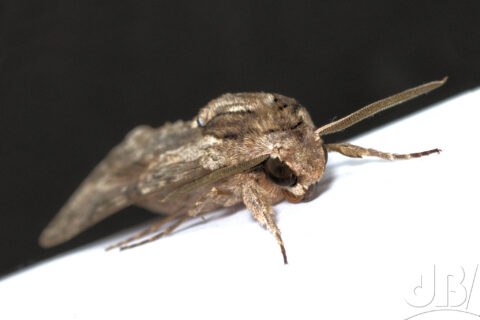
I could confirm the Convolvulus ID when it (presumably the same insect) made another appearance in the garden five minutes later. There have been several reports of Convolvulus in the county this year already, so this wasn’t the first.
The one in our garden, sucked a little nectar from the flowers of the garden tobacco plants before heading for the UV lamp and diving into the trap. I quickly took the trap indoors and got setup for a photoshoot. I snapped a few closeups of this beautiful moth before releasing it back to the night air.
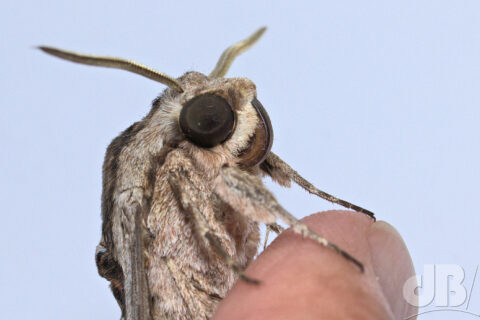
As you can see from my photos it has some of the character of the Privet Hawk-moth, another member of the Sphingidae (what the Americans call Sphinx moths as opposed to Hawk-moths). Wingspan can be between 85 and 120mm, this one, I estimated was about 110mm across.
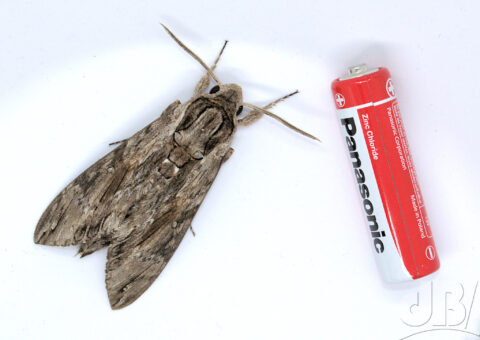
Convolvulus often appears alongside other migrants. It has been a particularly good summer for the distant, much smaller cousin, the Hummingbird Hawk-moth, as I’ve mentioned here and on Twitter, Facebook, and Instagram. The Striped Hawk-moth has been reported widely, and I am still hoping that one will turn up here, it would be a grand end to our holiday period if it were to join the Convolvulus in making a late Summer appearance.
*The holiday mothing was limited to lighting up with the LepiLED and logging the Lepidoptera in the morning, most of our adventures were out and about in the local countryside and on the coast. The more general photos from our trip will appear in good time, but right now I am focused on the Convolvulus.